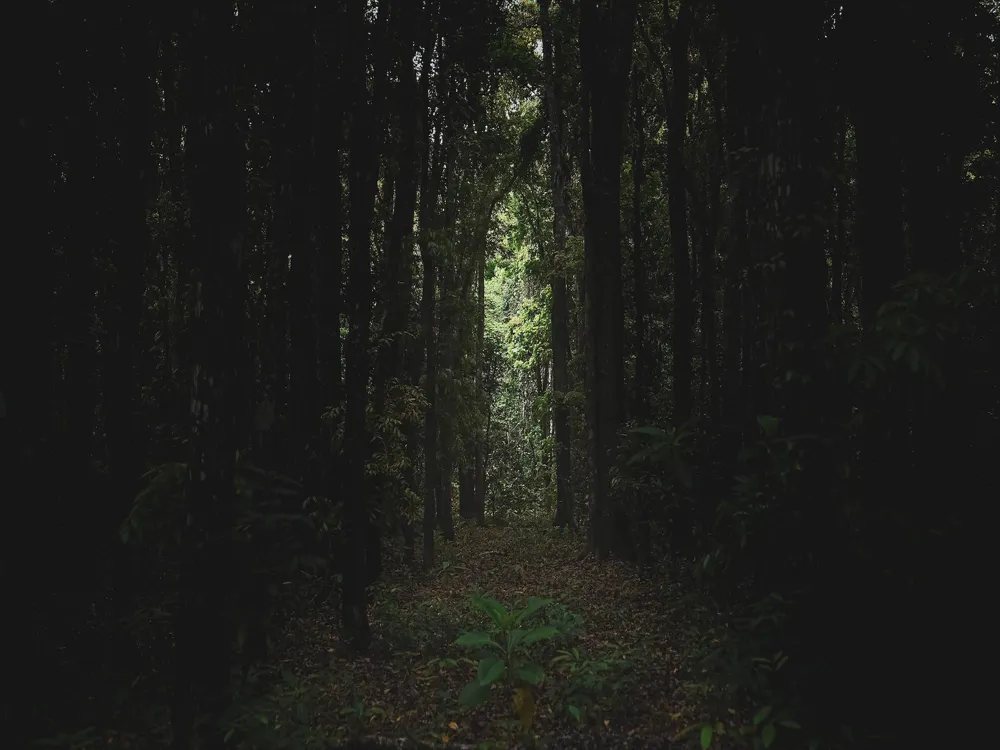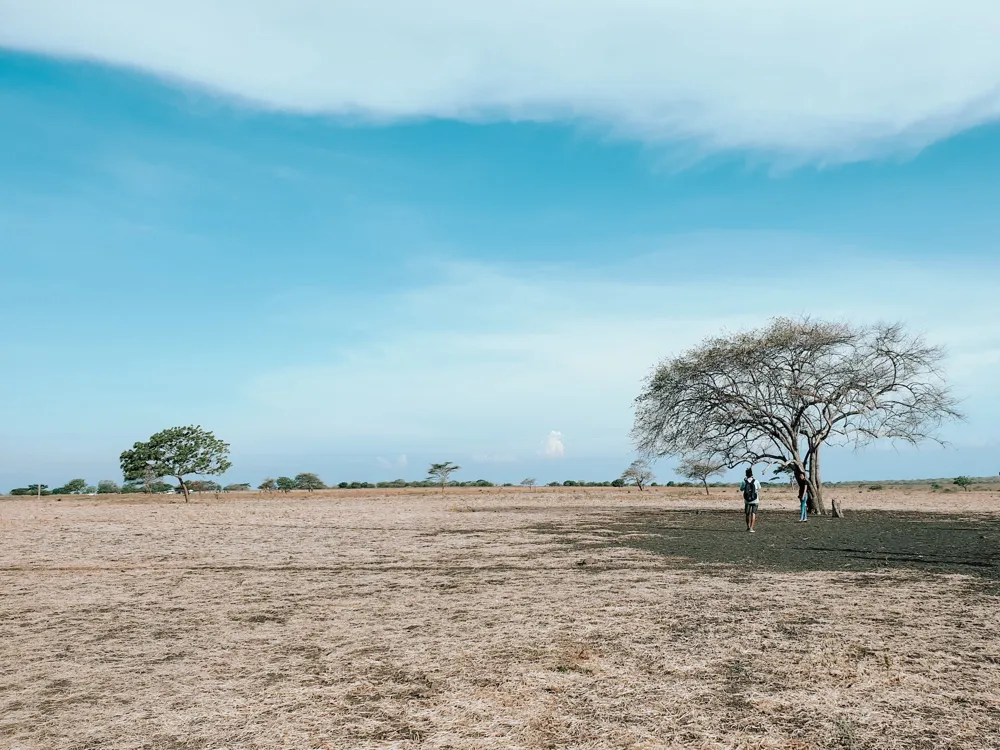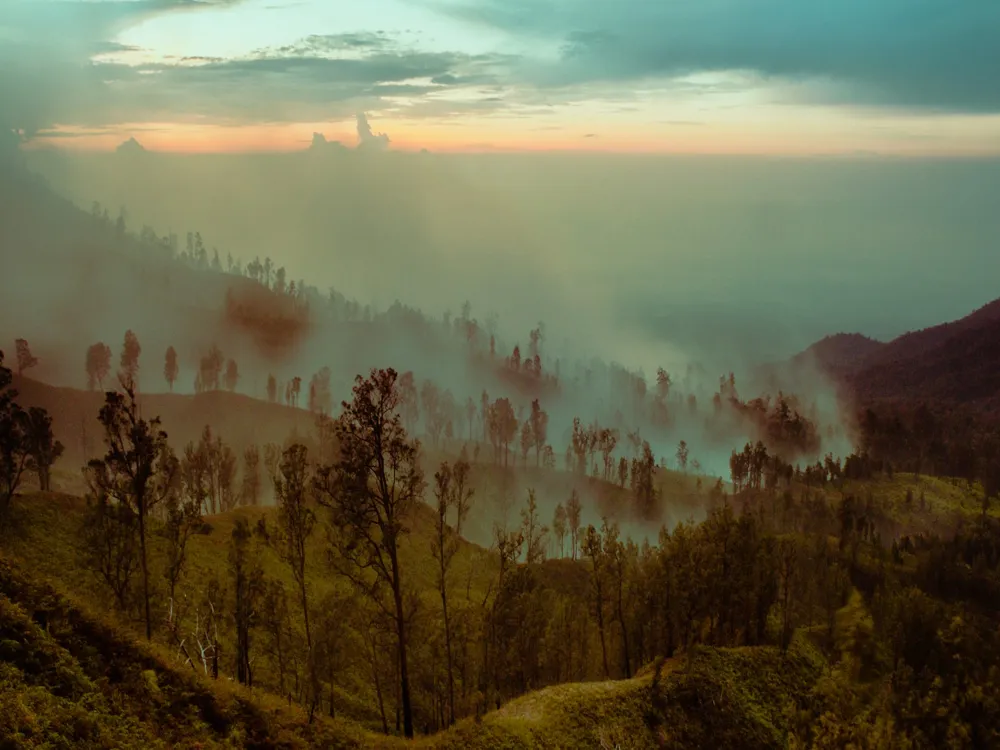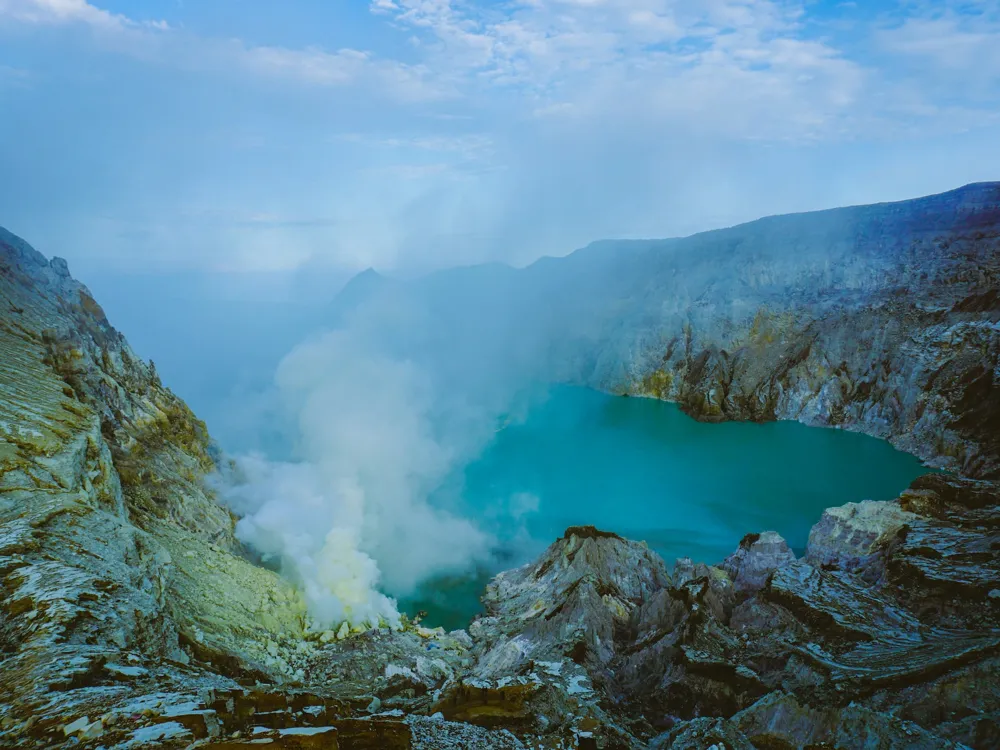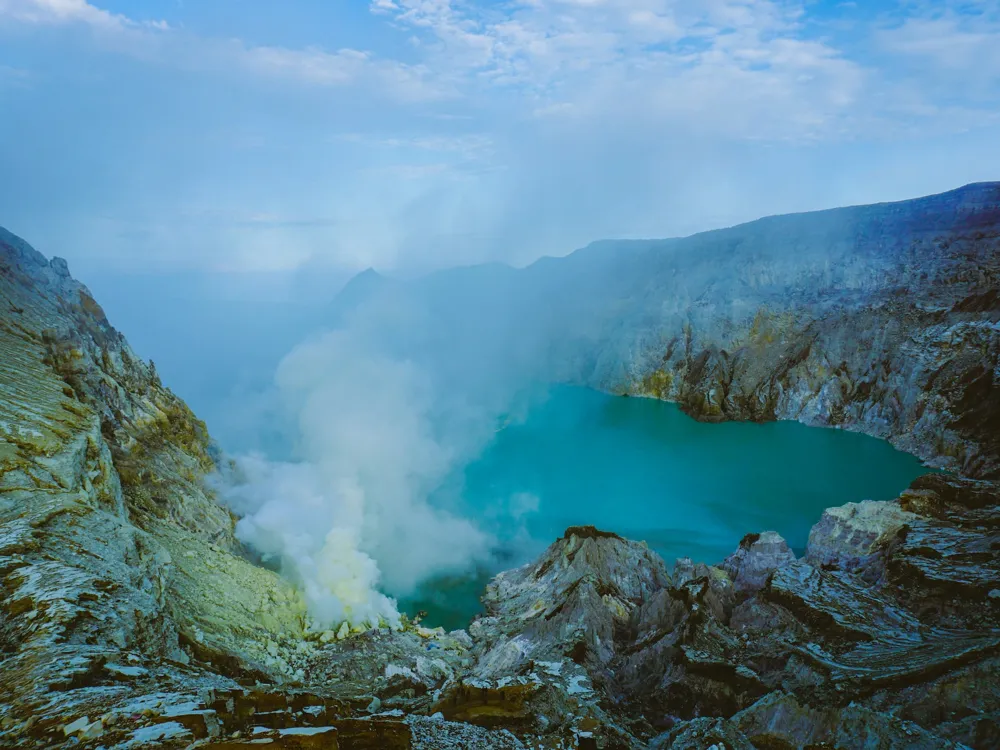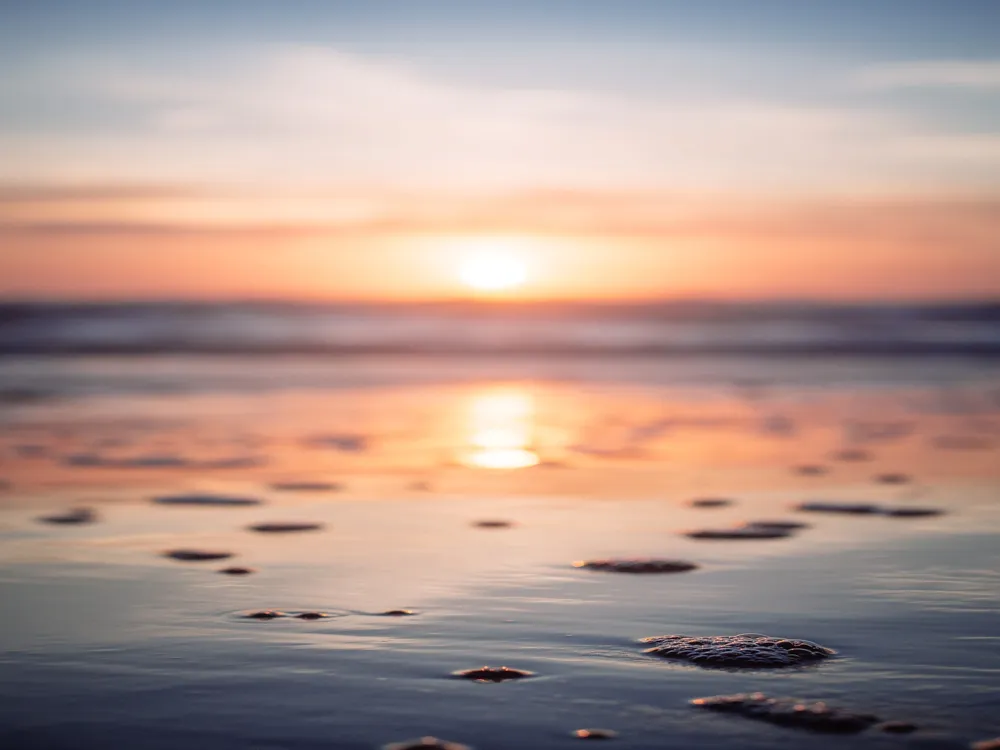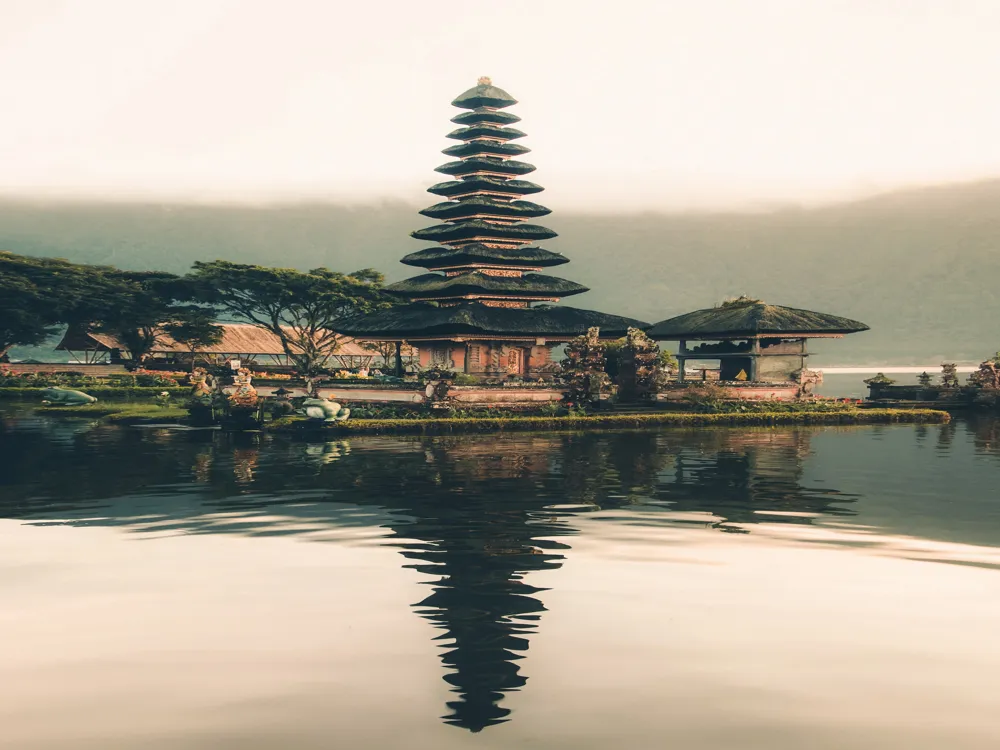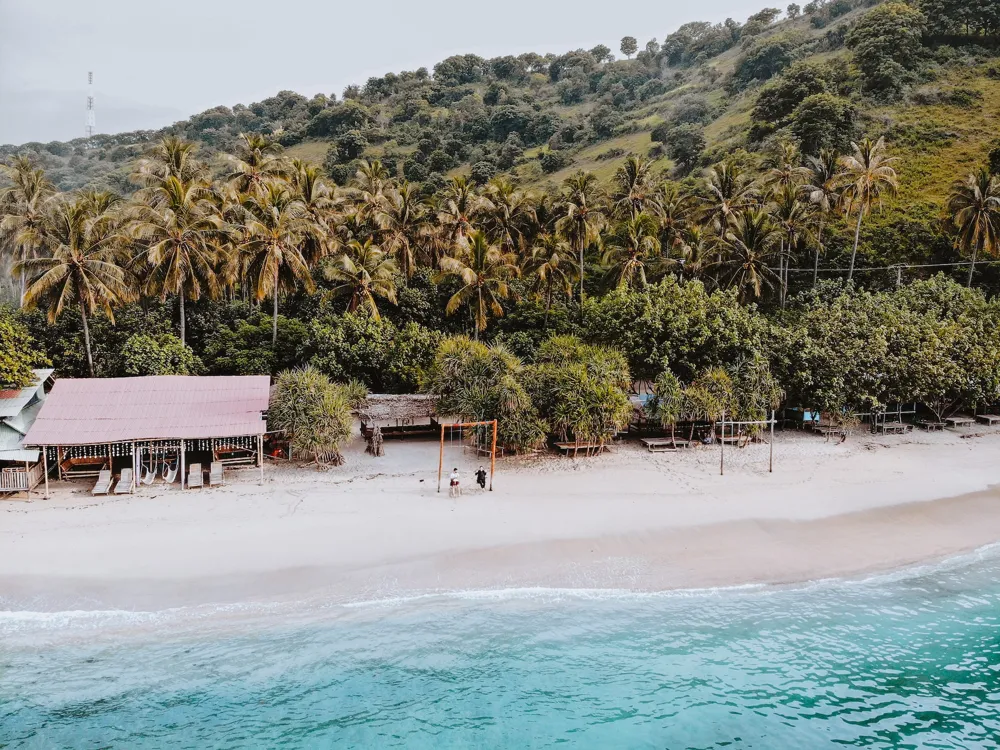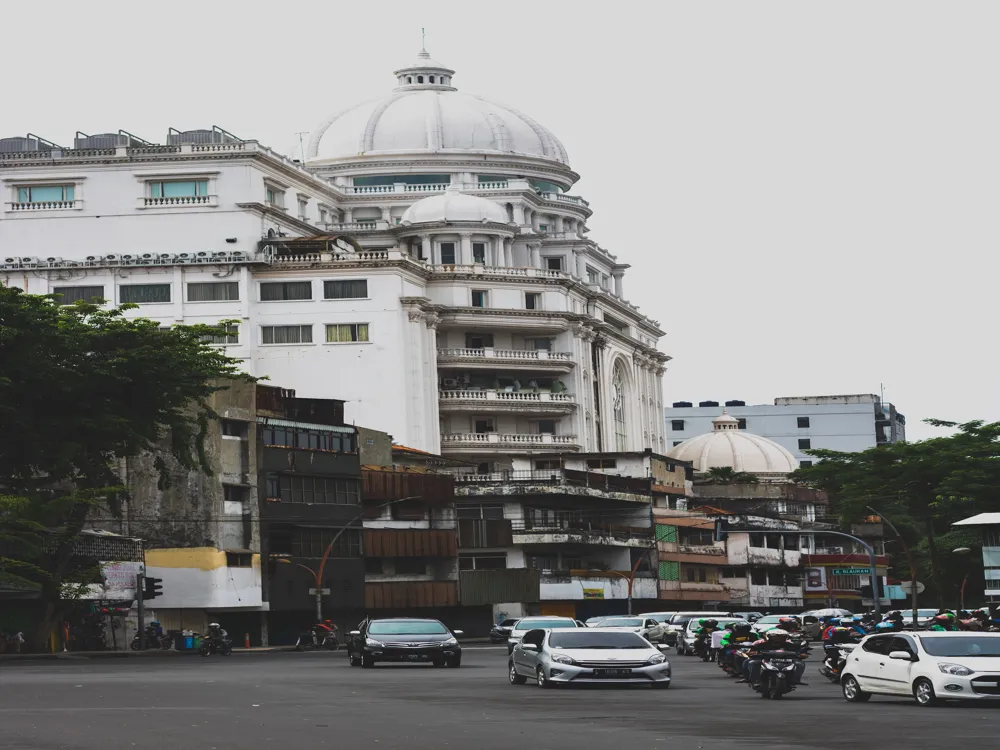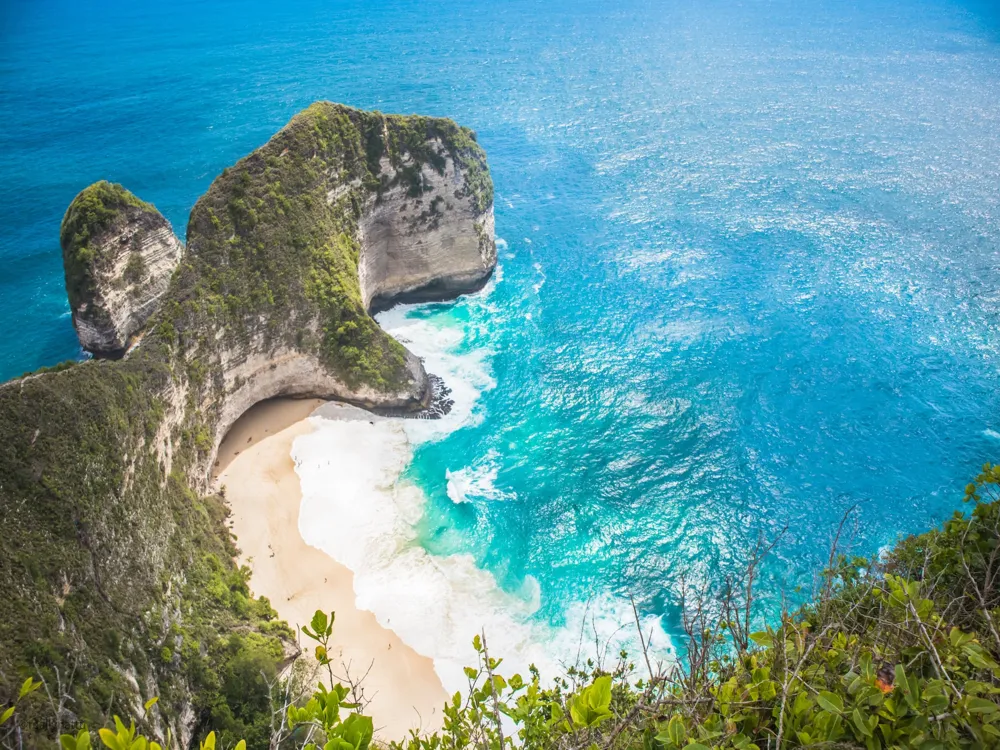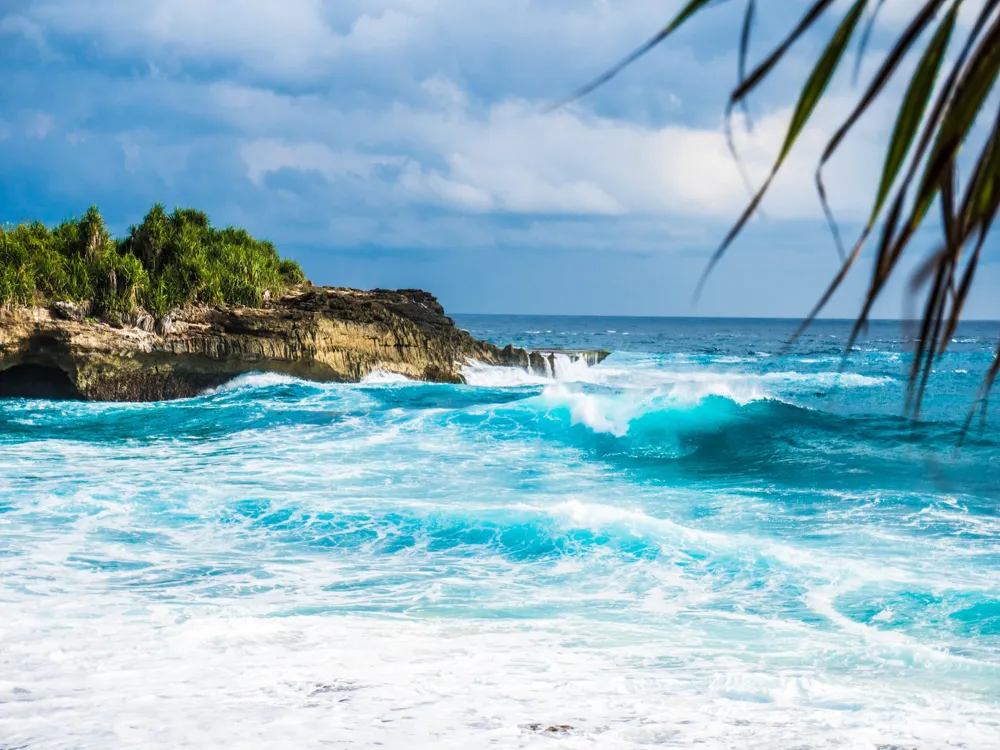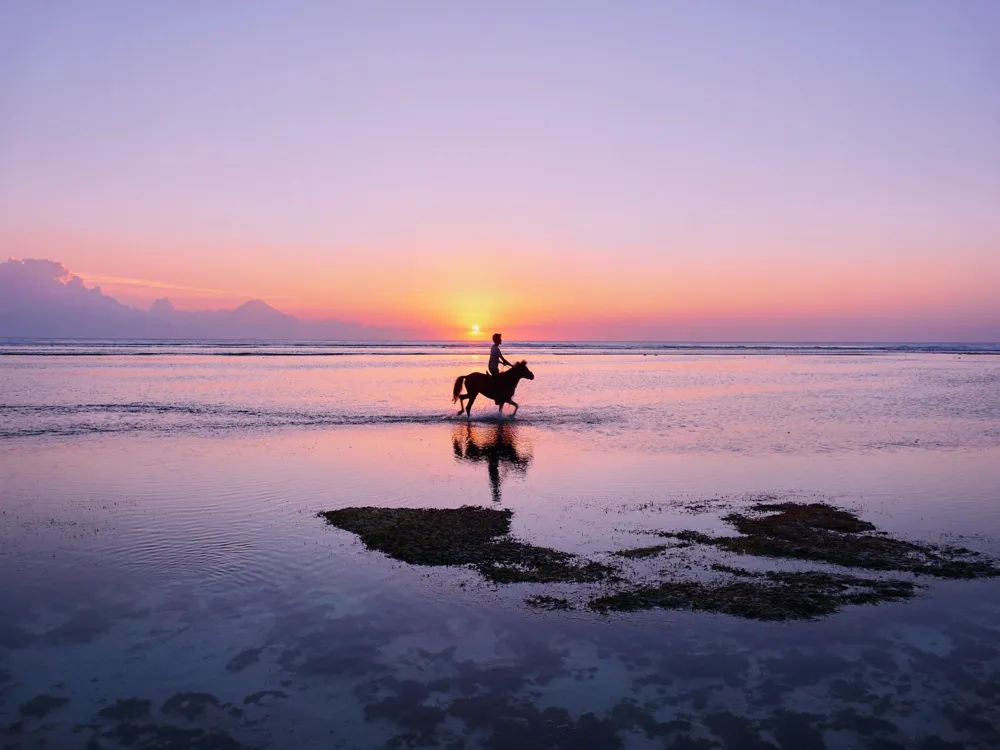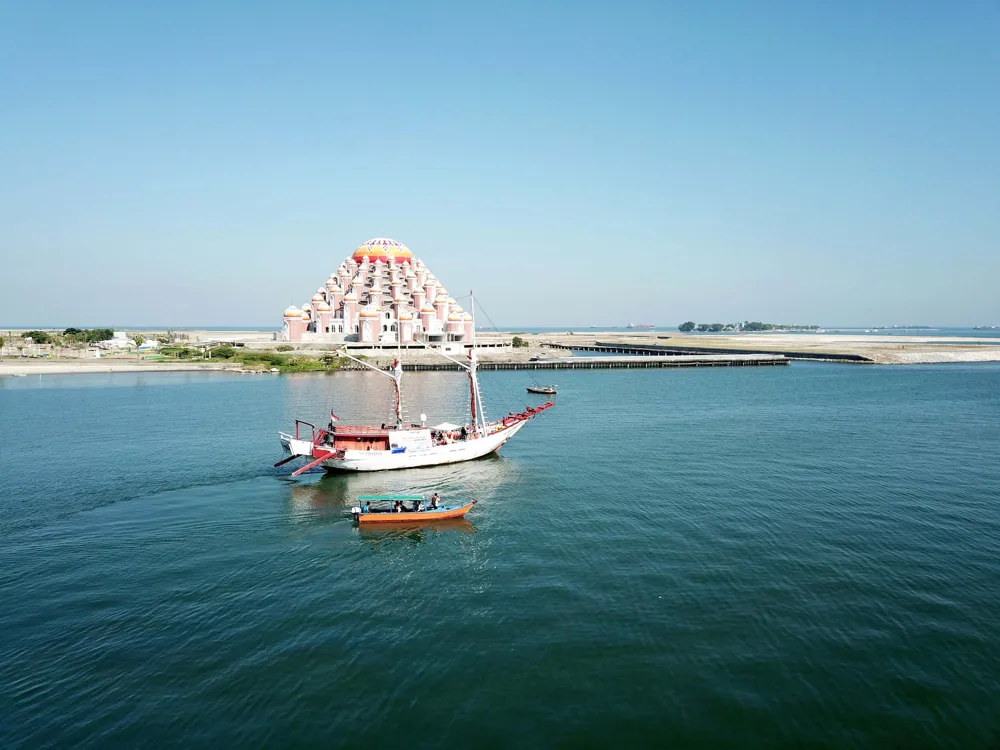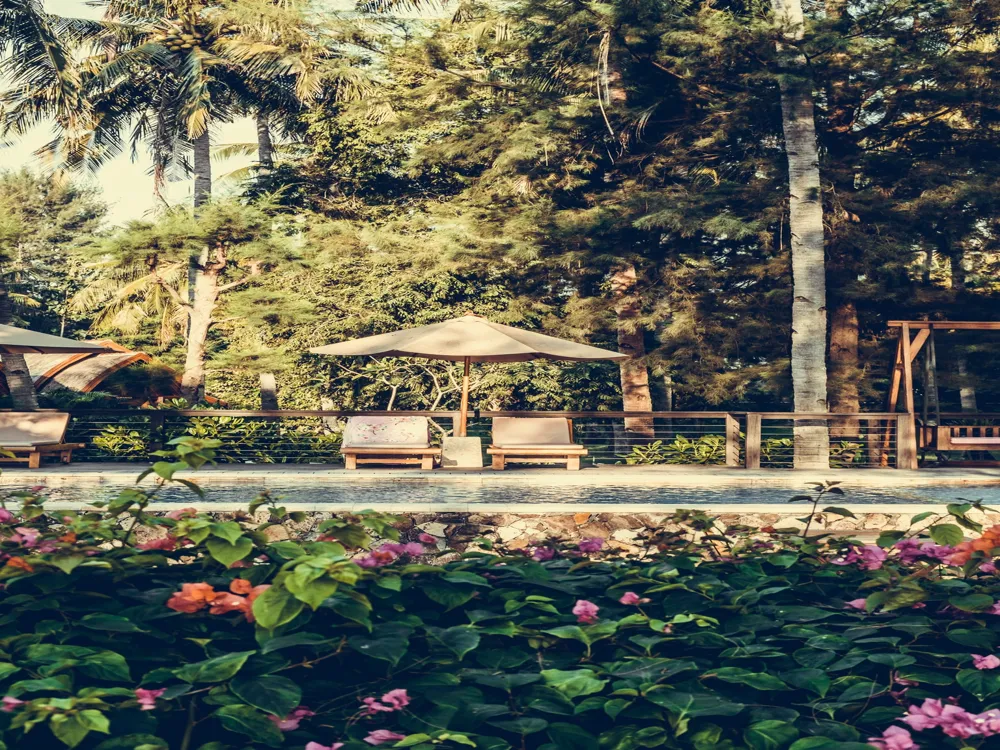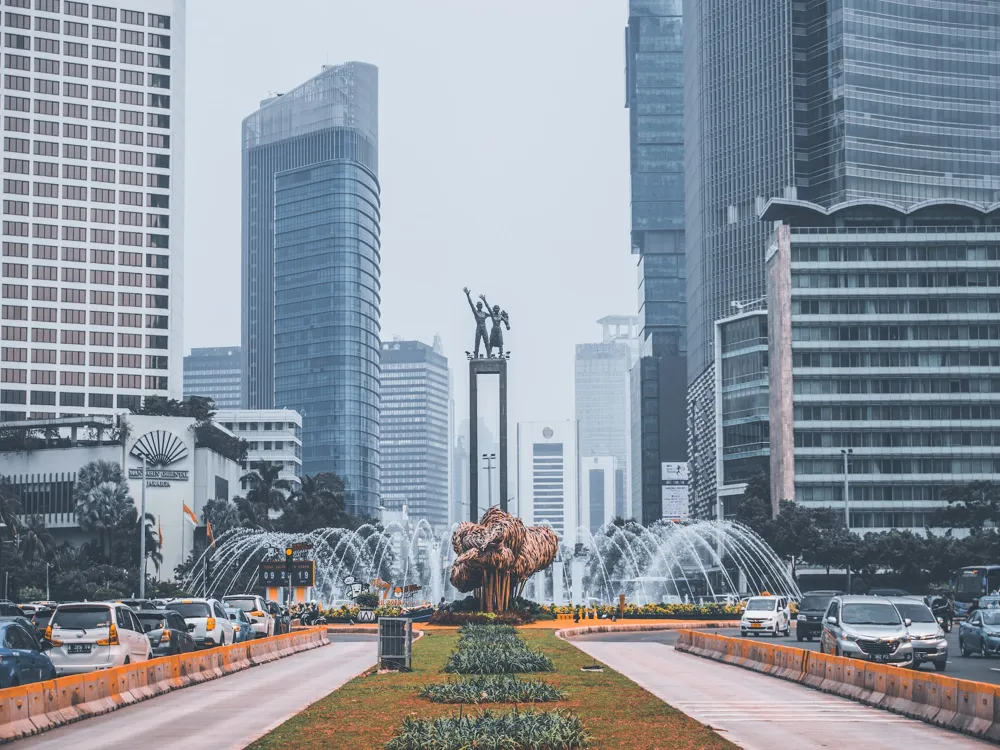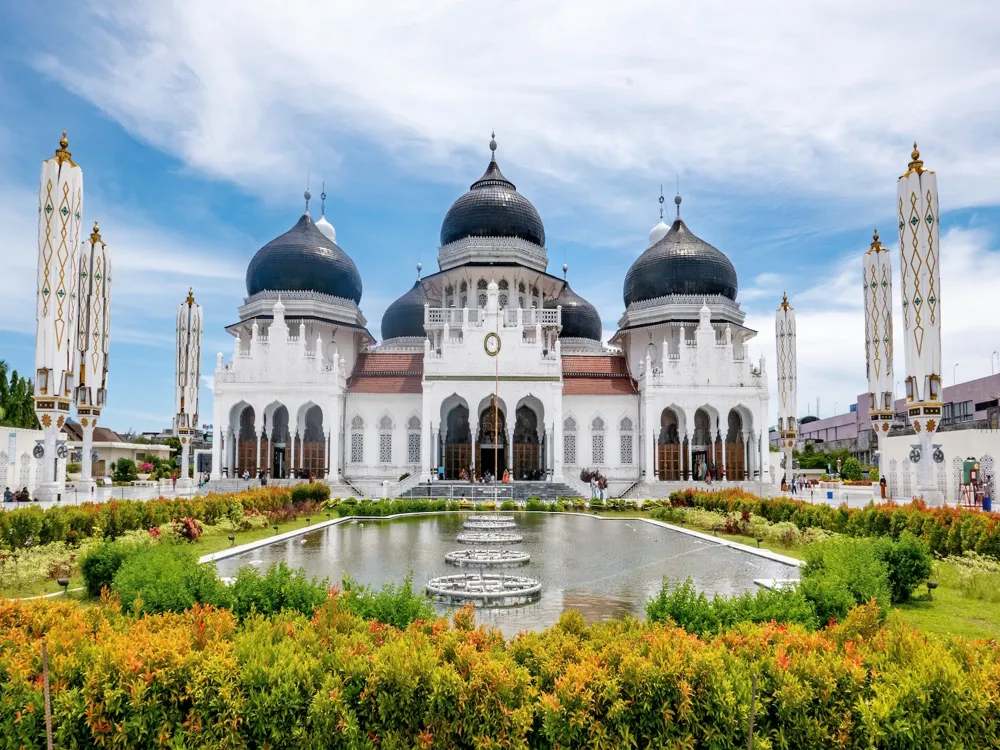Pulau Merah, located in Banyuwangi, East Java, Indonesia, is a hidden gem known for its stunning natural beauty and serene ambiance. This picturesque destination, often compared to Bali's famous beaches, is increasingly gaining popularity among tourists for its unique charm and tranquil environment. The name Pulau Merah, which means 'Red Island' in Indonesian, is derived from the reddish hue of its soil, particularly visible during sunrise and sunset. The island's main attraction is its beautiful beach, featuring a combination of soft white sand and red soil, set against the backdrop of a lush green hill. Pulau Merah is not just a beach; it's a complete experience of nature, culture, and adventure.
The area's landscape is dominated by a stunning hill located just offshore, providing an idyllic setting for beachgoers. The hill, accessible during low tide, offers breathtaking views of the surrounding ocean and is a popular spot for photo enthusiasts. The beach itself is a haven for surfers, with waves suitable for both beginners and experienced surfers. Besides surfing, visitors can indulge in other activities like swimming, sunbathing, and exploring the local fishing villages. The local community, known for their warmth and hospitality, adds to the island's charm, offering insights into their traditional way of life.
Pulau Merah's natural beauty extends beyond its beaches. The surrounding area is rich in biodiversity, with a variety of flora and fauna. Nature lovers can explore nearby mangrove forests, which are crucial for the local ecosystem, or take a hike in the nearby hills to witness the diverse birdlife. The region's climate is tropical, with relatively stable temperatures throughout the year, making it an ideal destination for travelers at any time.
The cultural aspect of Pulau Merah is deeply rooted in the traditions and practices of the local community. Visitors have the opportunity to experience local festivals and ceremonies, which are often colorful and vibrant, reflecting the rich cultural heritage of the region. The local cuisine, influenced by Javanese and Balinese flavors, is a delight for food enthusiasts. Dishes made with fresh seafood, local spices, and coconut are a must-try for anyone visiting Pulau Merah.
In summary, Pulau Merah in Banyuwangi offers a perfect blend of natural beauty, cultural richness, and adventure. Its pristine beaches, friendly locals, and untouched natural surroundings make it an ideal destination for those seeking a peaceful getaway from the hustle and bustle of city life. Whether you're a surfer, nature enthusiast, or just looking for a relaxing holiday, Pulau Merah promises an unforgettable experience.
The architecture of Pulau Merah is a beautiful blend of traditional Javanese and contemporary styles, reflecting the island's rich cultural heritage and modern influences. The buildings in Pulau Merah are predominantly influenced by Javanese architecture, characterized by their distinct roof design, known as 'Joglo'. The Joglo roof, with its rising central part and lower outer sections, is not only aesthetically pleasing but also serves a practical purpose in the tropical climate by facilitating air circulation.
Traditional houses, locally known as 'Limasan' or 'Gladak', are a common sight in the villages around Pulau Merah. These houses are built using local materials like wood and bamboo, featuring intricate carvings and decorations that showcase the skill and artistry of local craftsmen. The houses are typically raised on stilts, which helps in keeping the interiors cool and offers protection during the rainy season.
In contrast to the traditional structures, there are also modern accommodations and facilities that cater to tourists. These buildings often incorporate elements of traditional Javanese architecture with modern amenities, offering a unique blend of the old and the new. The use of local materials and designs in these contemporary structures ensures they blend seamlessly with the natural environment and maintain the island's aesthetic appeal.
The public spaces and communal areas in Pulau Merah are designed to foster community interactions and cultural activities. Open-air pavilions, known as 'Pendopo', are common in village centers, serving as gathering places for social events, cultural performances, and community meetings. These pavilions are a testament to the importance of community in Javanese culture and reflect the social fabric of Pulau Merah.
The religious architecture in Pulau Merah, predominantly Islamic, also bears the imprint of Javanese style. The mosques in the area are simple yet elegant, with tiered roofs and open spaces that encourage community participation. The blend of Islamic and Javanese architectural elements in these religious structures symbolizes the harmonious coexistence of different cultural influences on the island.
In conclusion, the architecture of Pulau Merah is a fascinating amalgamation of traditional and modern styles. It encapsulates the island's cultural heritage and embraces new influences, creating a unique architectural landscape that complements its natural beauty. From traditional Javanese houses to modern tourist facilities, the architecture of Pulau Merah is an integral part of its charm and allure.
The best time to visit Pulau Merah is during the dry season, from April to October, when the weather is sunny and the sea conditions are ideal for surfing and beach activities. Bring sunscreen, insect repellent, swimwear, a hat, and comfortable walking shoes. Also, pack light clothing suitable for a tropical climate and a waterproof bag for electronics. Be respectful of local customs and traditions. Dress modestly, especially when visiting villages or religious sites, and always ask for permission before taking photos of locals. Book accommodations in advance, especially during peak seasons. Options range from budget homestays to more luxurious resorts, catering to different preferences and budgets. Don't miss trying the local cuisine, which is a delightful mix of Javanese and Balinese flavors, with an emphasis on fresh seafood and local spices. Stay hydrated, use mosquito repellent, and be cautious while swimming or surfing. Ensure you have travel insurance and be aware of the nearest medical facilities.
Reaching Pulau Merah is relatively straightforward, with several options available. The nearest airport is Banyuwangi International Airport, which has flights from major cities in Indonesia. From the airport, Pulau Merah is approximately a 2-hour drive. There are taxis and shuttle services available at the airport for this journey. Alternatively, visitors can also reach Banyuwangi by train or bus from other parts of Java. Once in Banyuwangi, local transportation options like buses, taxis, or motorbike rentals can be used to reach Pulau Merah. It's advisable to arrange transportation in advance, especially during peak travel seasons.
Overview of Pulau Merah, Banyuwangi
Architecture of Pulau Merah
Tips When Visiting Pulau Merah
Best Time to Visit
Packing Essentials
Respecting Local Culture
Accommodations
Local Cuisine
Health and Safety
How To Reach Pulau Merah
Pulau Merah
Banyuwangi
NaN onwards
View banyuwangi Packages
Also Refered As:
Red Island Beach
Banyuwangi Travel Packages
View All Packages For Banyuwangi
Top Hotel Collections for Banyuwangi

Private Pool

Luxury Hotels

5-Star Hotels

Pet Friendly
Top Hotels Near Banyuwangi
Other Top Ranking Places In Banyuwangi
View All Places To Visit In banyuwangi
View banyuwangi Packages
Also Refered As:
Red Island Beach
Banyuwangi Travel Packages
View All Packages For Banyuwangi
Top Hotel Collections for Banyuwangi

Private Pool

Luxury Hotels

5-Star Hotels

Pet Friendly







